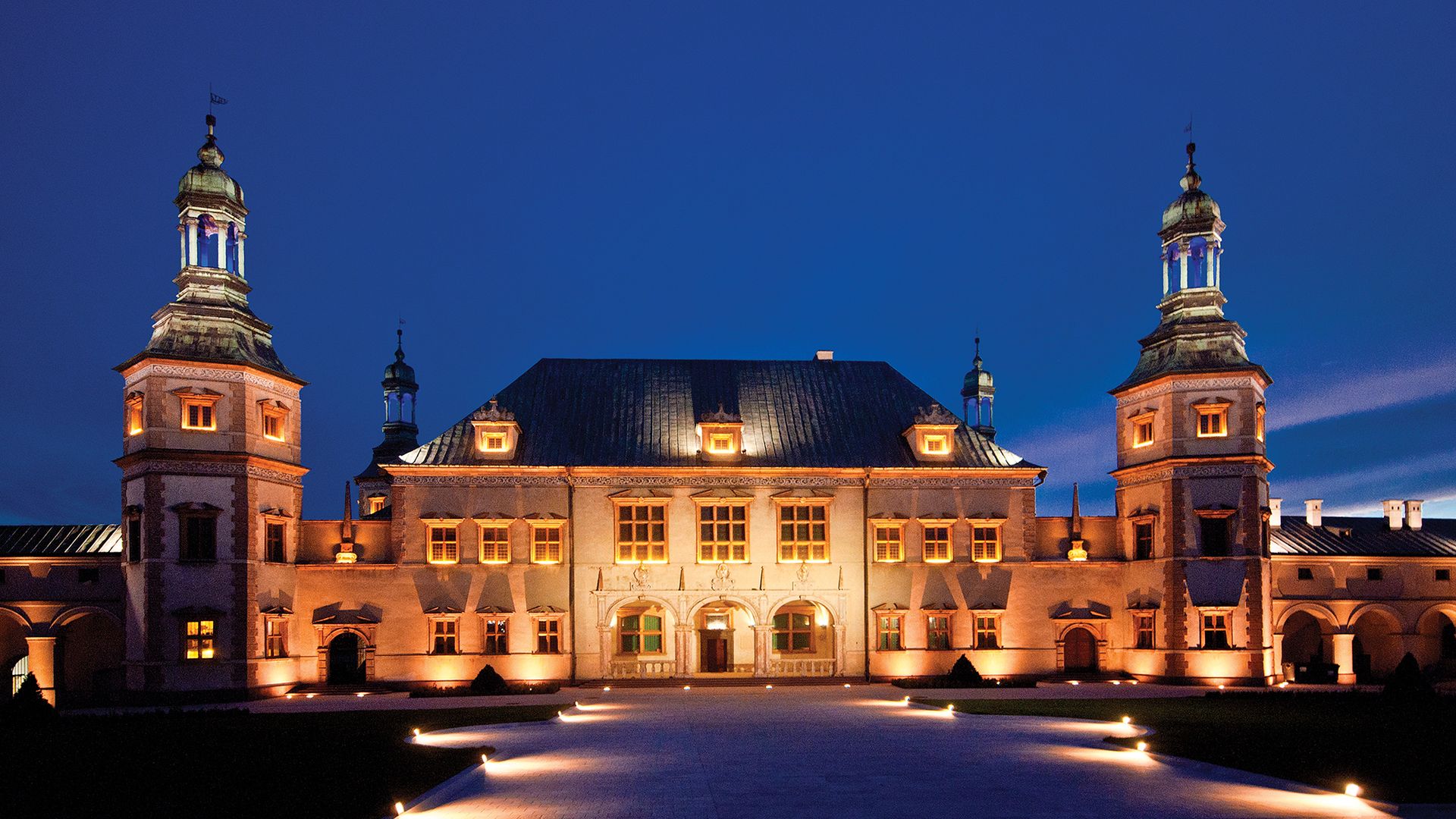It is considered to be the best-preserved architectural construction in Poland from the Vasa dynasty times. The palace belonged to the Cracovian bishops who owned large estates in the Świętokrzyski region.

The residence founded by bishop Jakub Zadzik (1582-1642) was erected on the Cathedral Hill. In the years 1637-1644, a one-storied building was raised, its roofs decorated with towers on roof hips. The design of the Kielce palace is attributed to Thomas Poncino of Lugano (Italy), an author of numerous sacral and lay buildings in Poland. A principle of triple division was applied during the construction of the palace front, supposedly following orders of the founder who was an enemy of the Arian movement rejecting the dogma of the Trinity.
The front yard of the palace was enclosed with walls. There was a grand entrance gate from the city side and a flower and kitchen garden in the backyard. It was known as an Italian garden and had a 17th century layout of flowerbeds.

Remodeled in the 18th century, the palace acquired a Baroque appearance with one-storied wings on both sides of the front yard. Orangeries were arranged in the palace garden, while the administration section was provided with stables, coach-houses, manege, granary and brewery. Some of them have survived till the present time.
The Italian Garden was arranged according to the example of castle gardens usually located inside the fortifications. The central part was occupied by symmetrically arranged four beds with herbs and flowers in bloom, while the whole lot was surrounded by fruit trees. Special steps running close to the palace loggia were leading to the garden. A giardino segreto, or a small private garden, was placed very close to the palace wall; it was accessible only for the palace owner and could be entered from the apartment via a stair-case located in the alcove.
When the civil authorities took over the bishops" estates in 1789, the garden was divided into plots designated for civil officers; it resulted in the disappearance of original garden arrangement and its vegetation. It was returned to its original 17th century shape in 2003, while the flower beds were reconstructed to their state from the mid-18th century.
Following the nationalization of bishops" properties (1789), the palace hosted different institutions to eventually become the seat of the National Museum in 1971. Permanent exhibitions were soon arranged and conservation works started on the reconstruction of the bishops" apartment and the palace garden. The palace interiors were marked by the original function of the building. The upper level chambers preserved their original interiors, beam-framed floors, paintings and friezes on the walls. Interior decorations of the chambers are a good example of palatial furnishings from the 17th and 18th centuries. They include furniture, tapestries, paintings, pieces of arms and weapons, as well as items of goldsmithery in the treasury. Plafonds are worth of particular attention: paintings on the ceilings of three chambers depict activities of the palace founder.

